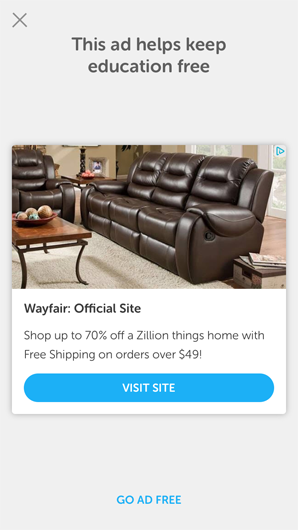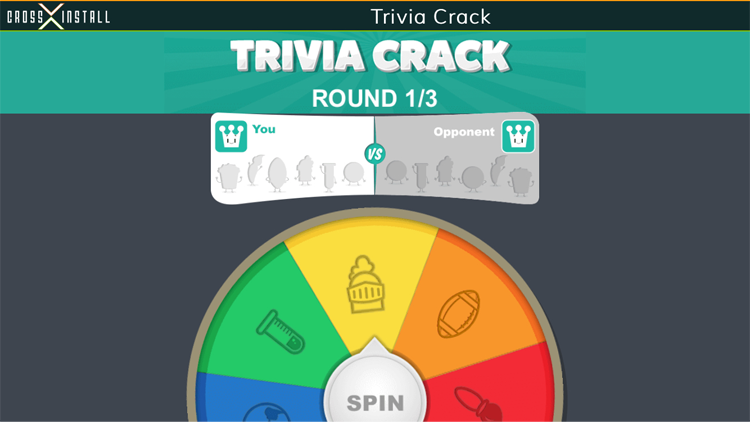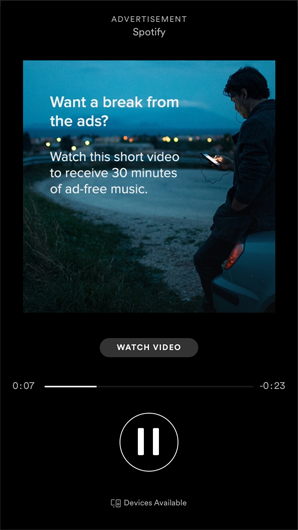How In-App Advertising Works for App Monetization

How In-App Advertising Works for App Monetization
What's the difference between in-app ads and mobile web ads? Which is best for monetizing your mobile app? Understand the options for mobile advertising, and learn how to use in-app advertising to make money with your mobile app in 3 steps.
Updated September 18, 2023
We’ve written before about how to monetize your app, both with ads and without. While there are some compelling reasons that many developers opt to go ad-free with their apps, “freemium” and paid apps aren’t always right for everyone.
In many cases, in-app advertising is a great way to begin generating revenue quickly in the digital advertising ecosystem, especially if you’re determined to keep your mobile app free for your target audience.
Here’s how to get started using in-app advertising to monetize your app:
- Choose an ad network
- Select the right in-app ad format
- Choose an ad pricing model
Hire an advertising agency to help with your app monetization strategy.
In-App Ads vs Mobile Web Ads: What’s the Difference?
As the name suggests, in-app advertisements are displayed within a mobile app.
These can be anything from a sponsored post or tweet on a social media app, to a banner or autoplay video in a mobile game.
Mobile web ads appear on web pages users navigate to in their browsers in real time.
While there’s still a place for mobile web ads, in-app advertising has largely overtaken it.
More users prefer apps, and features such as location data and advanced campaign analytics make in-app ads a highly targeted path to reaching and converting users.
Why Monetize Your App With Mobile Advertising?
Mobile app users increasingly shy away from purchasing apps, making in-app advertising a more viable method for monetizing your app.
In the early days of the app store, the monetization tactic of choice was “paid for” apps, where users paid once to download an ad-free app.
In recent years, users have become less willing to pay for apps, and free apps with ads and/or in-app purchases have grown in popularity.
Moreover, time spent in apps has increased, with nearly 80% of user time spent in-app, and just 20% spent on mobile web pages.
While many developers now prefer in-app purchases (including purchases to remove ads), others stand by ad revenue as a tried and true path to monetization.
One obstacle to finding in-app ad success, however, is that while 90% of consumers are influenced by advertising, many users consider in-app ads spammy, distracting, and intrusive.
Still, there’s no denying that well-executed in-app ads can be an effective driver of revenue and a great token of brand awareness. According to Chad Gallagher, director of mobile at AOL, “In-app mobile ad spend is really the future of the mobile advertising category.”
3 Steps to Get Started With In-App Ads
When you’re ready to monetize with in-app ads, there are a few key steps to get started in the ad space.
In addition to choosing an ad network, you need to decide on an in-app ad format and the type of campaign you want to run.
1. Choose an Ad Network
Mobile ad networks act as an intermediary in the mobile advertising industry, connecting publishers with advertisers.
Google’s AdMob is one of the biggest and most popular ad networks, but it’s by no means the only one out there – publishers and advertisers have their pick of many ad networks.
Ad networks differ in their performance, ROI, targeting options, platforms and ad formats supported, and campaign types available.
To choose the best and right ad network for your business, you need to know the following demographics:
- Which mobile users you want to reach
- Where they are
- Your advertising goals
If you’re not sure how to decide, this article from Moby Affiliates offers a good overview of ad networks that can help guide your choice.
2. Select the Right In-App Ad Format
The majority of mobile ad networks offer 5 main display ad formats:
- Banner ads
- Interstitial ads
- Native ads
- Video
- Offer Wall
Other popular ad formats include playable and rewarded ads.
Banner Ads
Banner ads, also called display advertising, is perhaps the ad type most familiar to users. These display ads are typically text and/or images displayed at the top or bottom, alongside the app content.

Banner ads can appear intrusive and may annoy users who accidentally click on them. In fact, one survey found 60% of all mobile banner clicks are accidental.
Native Ads
Native ads are typically the least intrusive ad format. They are designed to match the look and feel of the app on any mobile device, and the offers tend to relate to the function of the app or target your interests.

For example, the Instagram ad above appears alongside organic content in a user’s feed and matches the look and feel of typical content on the platform.
Interstitial Ads
Interstitial ads (sometimes called full-screen ads) are images or videos shown during transitions in the app – for example, between levels of a mobile game.

For example, this Wayfair ad showed appeared between lessons on the language app Duolingo.
While these full-screen ads typically are shown at natural transition points, they can still be seen as intrusive, since users must view them before they can continue using the app as usual.
They tend to have stronger click-through rates (CTR) than other formats, like banner ads.
Video Ads
Video ads are promotional clips. They may also be interstitial or native ads, depending on the app, as in the Instagram example above.
Video ads tend to be engaging and have strong click-through rates (users like watching videos). However, many users find videos annoying, especially when they aren’t skippable and/or have loud auto-playing audio.
Offer Wall Ads
Offer wall ads are typically a page in an app with a number of offers and incentives. These might include in-game currency, “lives,” or other content.
Sometimes these offers cost a small amount of money, while others incentivize users to perform actions – like watching a video or downloading another app. Great way to increase conversion rates.
This format tends to get higher click-through rates because users stand to gain something because they are given a lot of options so it’s likely they’ll be interested in at least one of the other apps or offers.
The downside is that since offers are on a separate page, they may not get as many impressions as interstitial or banner ads. However, they’re also less intrusive to users.
Playable Ads & Rewarded Ads
Other common ad formats, especially in game apps, include playable ads and rewarded ads.
A playable ad gives users a chance to briefly play a few minutes of another game they might like. These are commonly interstitial ads shown during different placements of game transitions.

The example above shows a playable ad for the game Trivia Crack.
Rewarded ads (like offer wall ads) incentivize users to watch a video, download, an app, or perform another action in exchange for in-game content. This might include extra lives, or in the case of an app like Spotify, a longer period of ad-free listening.

The example above shows a rewarded video ad on the Spotify mobile app
Every app is different, so when choosing a mobile ad format you’ll want to consider what will work best for your app and your user experience.
There are pros and cons to all of these ad types, so it’s important to test a variety to see what works best for your app and your users.
Remember that ads should be as unobtrusive to the user experience as possible while driving results for your advertisers and your revenue.
3. Select an Ad Pricing Model
There are a few different pricing models used for mobile app advertising campaigns. Three of the most popular include:
- Cost per mille (CPM)
- Cost per click (CPC)
- Cost per action (CPA)
Cost Per Mille (CPM)
CPM is a format in which the advertiser pays the publisher every 1000 times an advertisement is displayed.
CPM is beneficial for app publishers since an ad only needs to be shown to generate revenue.
One potential downside is that if your audience is a good fit for your advertiser and you find the ads are getting a high number of clicks, you might generate more revenue by charging per click or action instead.
Cost Per Click (CPC)
In CPC the advertiser pays only when an ad is clicked.
This is a more beneficial format for advertisers since they pay nothing for ads that don’t generate clicks.
CPC can be a good alternative to CPM for app owners. However, you run the risk of giving away impressions for free and generating no revenue at all if ads don’t get clicked.
Cost Per Action (CPA)
With CPA, advertisers pay only for clicks that lead to a specified action. This might include an app install, a form submission, website registration, or newsletter signup.
It’s a low-risk option for advertisers since they pay for specific outcomes only.
However, for publishers, it’s possible to serve a lot of ads and generate tons of clicks without actually getting paid for conversions.
Cost Per View (CPV) and Cost Per Install (CPI)
Other ad formats you might see around include CPV and CPI, which are specifically for generating videos and app installs.
While there’s no definitive rule for which pricing model to offer, publishers often prefer CPM since it tends to be the most predictable.
However, the model that produces the most revenue for you will depend on:
- Your app
- Your app type (iOS or Android)
- Audience
- The advertiser and ad creative
- The offer
- The ad placement
You’ll likely want to experiment with a few different models to see your target audience's response.
The Bottom Line of In-App Advertising
App monetization through mobile advertising involves finding the right balance across a number of different factors.
You want to select the mobile advertising network that best fits your app, your audience, the metrics you’re looking for, and the types of ads you’ll want to offer.
You also need to decide which formats to offer advertisers. This will likely mean experimenting with a few different types or looking at user data to see what drives results without disrupting your user experience.
Finally, consider what pricing model(s) you want to offer for ad campaigns.
You may want to start out with the CPM model, which drives predictable revenue for many publishers and switch to a different model if you find that your audience is a particularly good fit and driving a high number of clicks or other actions.
Include relevant ads for your target audience to increase retention and customer satisfaction.
